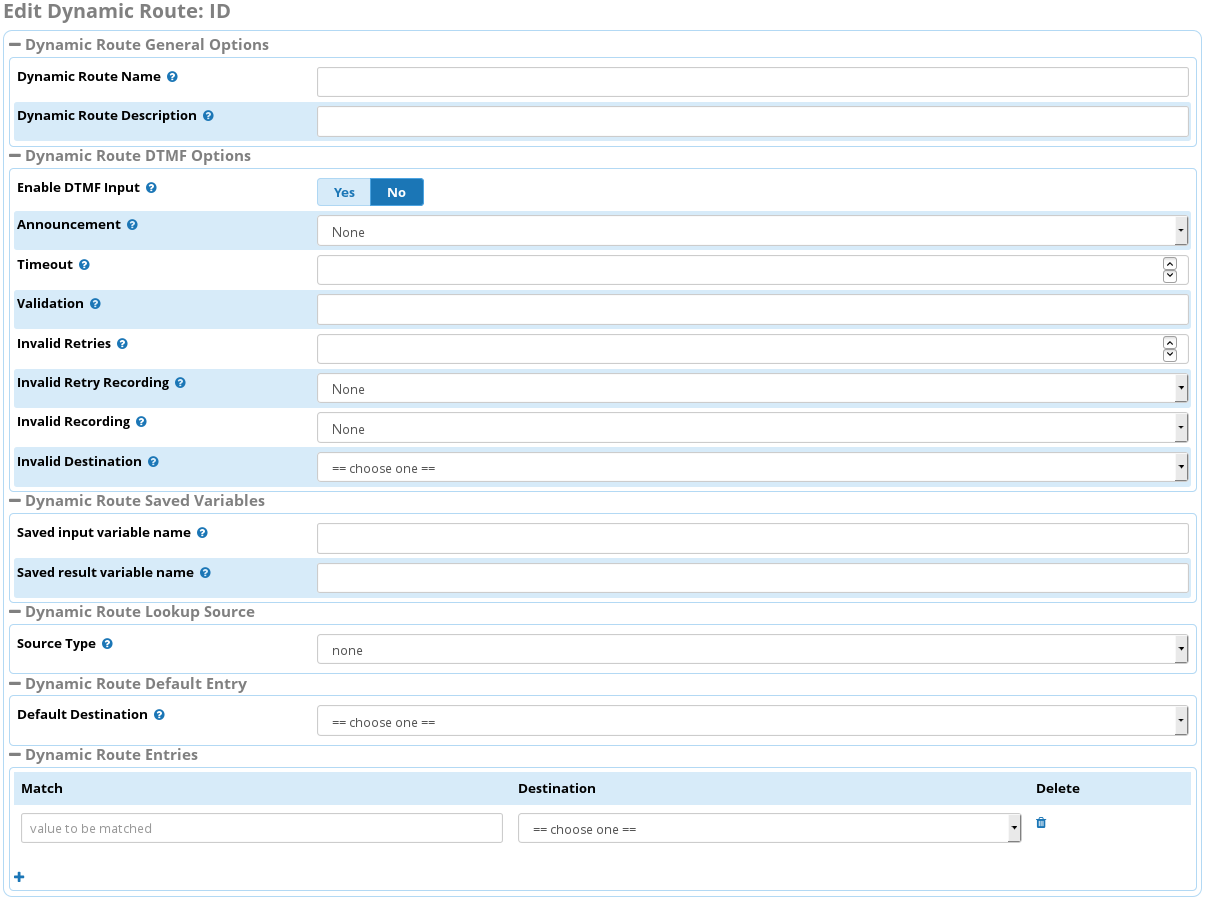Dynamic Routes Reference documentation: Difference between revisions
Jump to navigation
Jump to search
| Line 16: | Line 16: | ||
| Enable DTMF Input | | Enable DTMF Input | ||
| Setting: Yes or No. Default: No. If set to yes the call waits for input on the touch tone keypad. This can be used to capture caller input (for example a customer number). | | Setting: Yes or No. Default: No. If set to yes the call waits for input on the touch tone keypad. This can be used to capture caller input (for example a customer number). | ||
| Announcement | |||
| The system record to be played back. If Enable DTMF input is set to Yes then playback takes palce before waiting for DTMF input. | |||
|} | |} | ||
Revision as of 16:56, 11 June 2016
Dynamic Route
The following information documents how to fill in the fields of a Dynamic Route
| Field name | Comment | ||
|---|---|---|---|
| Dynamic Route Name | The name of the dynamic route. This can be chosen at will. It is used to identify the route when selecting it as a destination from other applications or inbound routes. | ||
| Dynamic Route Description | Optional description text for the Dynamic Route. This is for documentation purposes only | ||
| Enable DTMF Input | Setting: Yes or No. Default: No. If set to yes the call waits for input on the touch tone keypad. This can be used to capture caller input (for example a customer number). | Announcement | The system record to be played back. If Enable DTMF input is set to Yes then playback takes palce before waiting for DTMF input. |
Screenshot of adding a Dynamic Route
